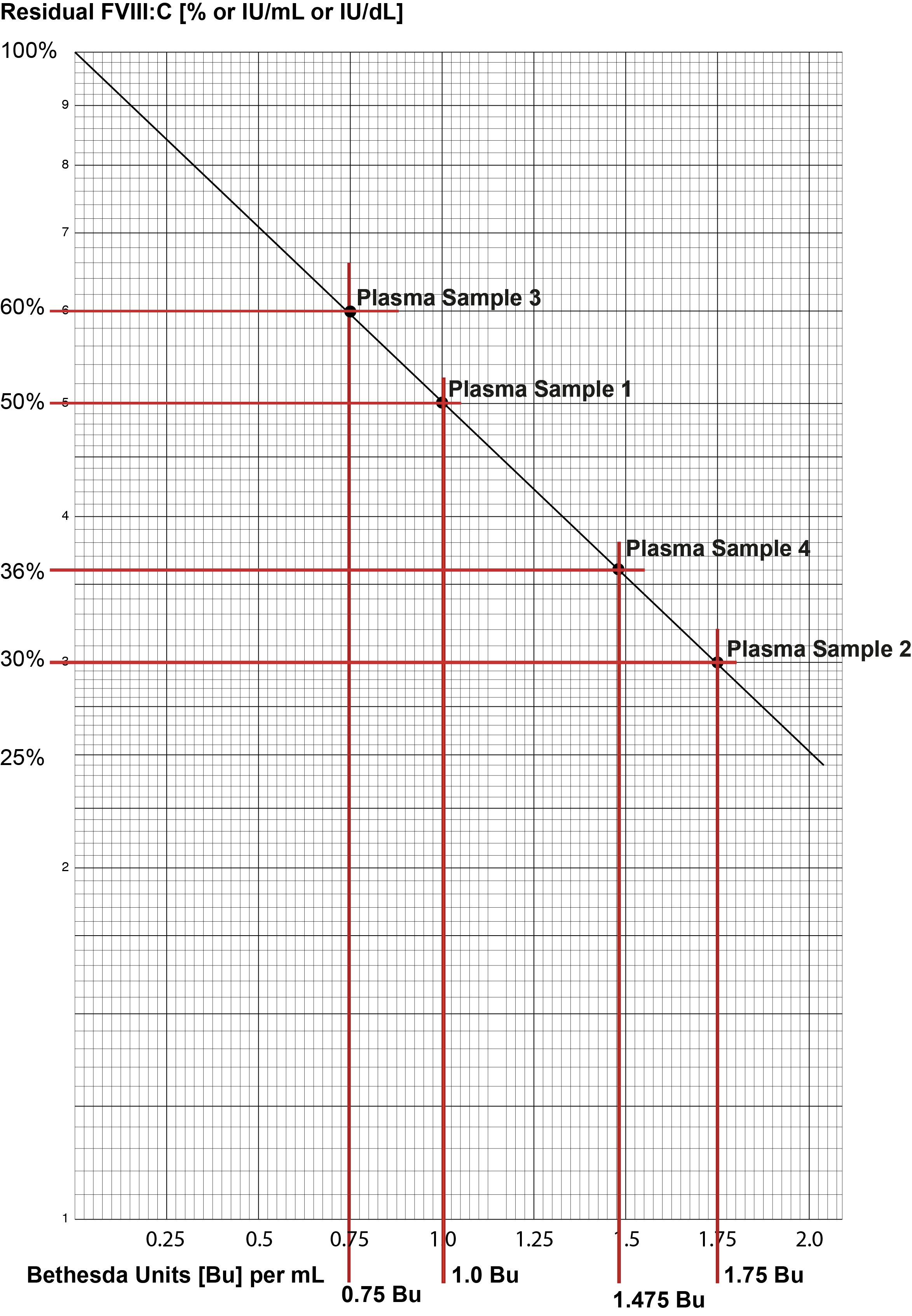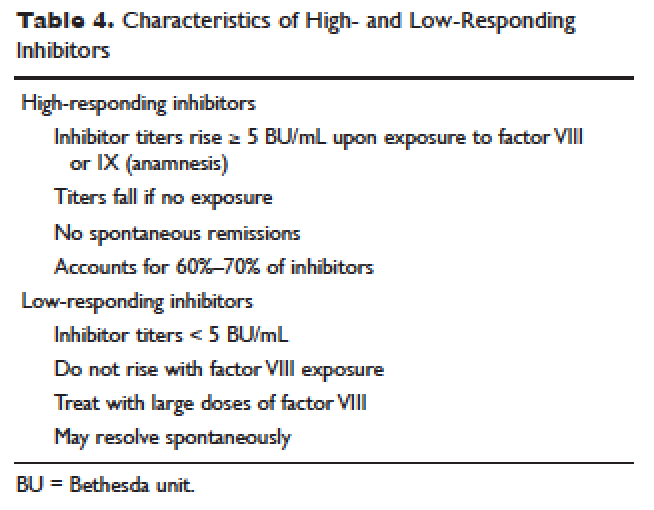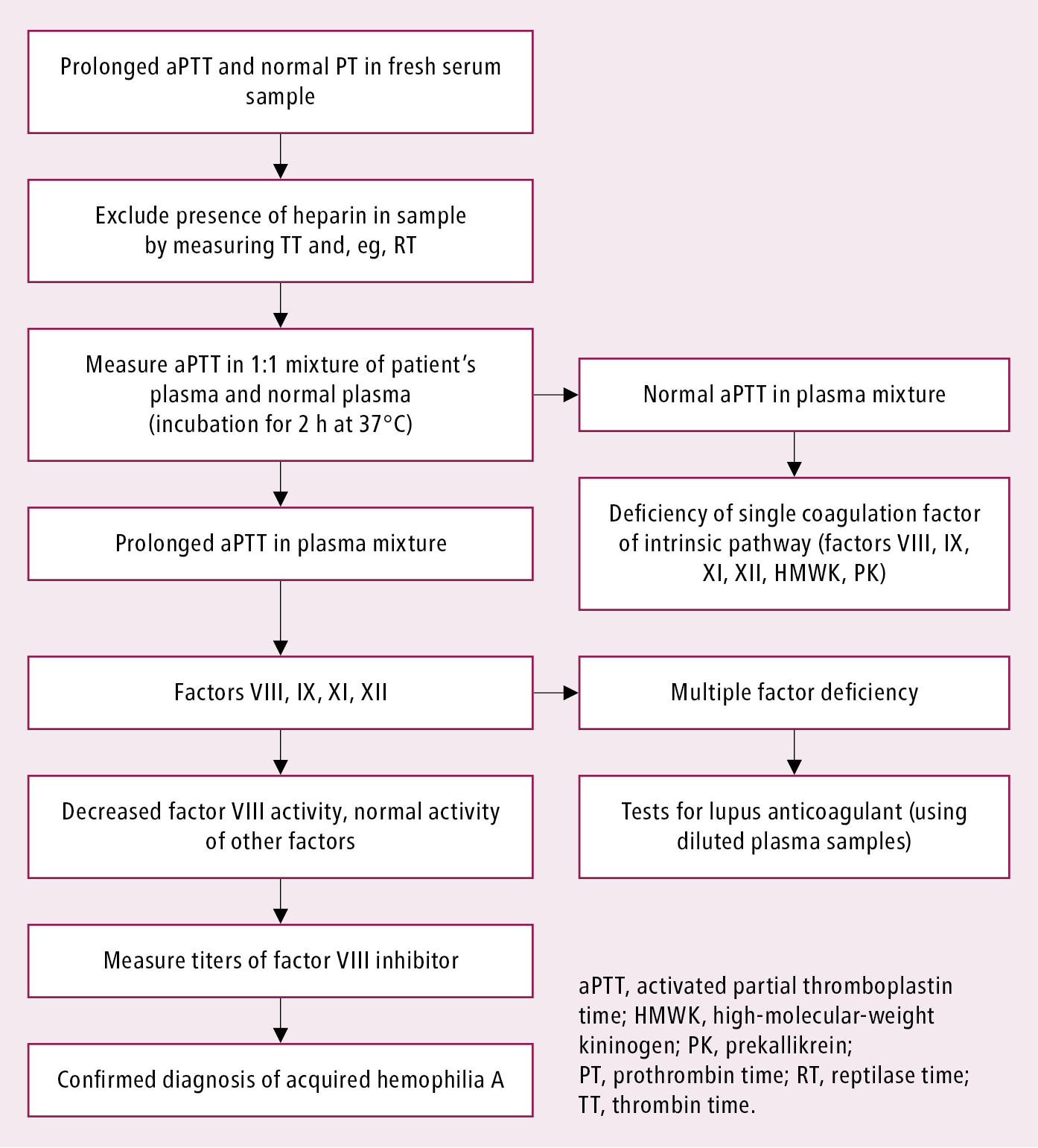factor viii activity high
 Elevated Factor VIII Levels and the Risk of Thrombosis | Arteriosclerosis, Thrombosis, and Vascular Biology
Elevated Factor VIII Levels and the Risk of Thrombosis | Arteriosclerosis, Thrombosis, and Vascular BiologyWarning: The NCBI website requires JavaScript to operate. High Factor VIII, von Willebrand Factor and Tromboembolism Hazard and Fibrinogen Levels in Black and White Amanda B. PayneCenters for Disease Control and Prevention, National Center on Birth Defects and Developmental Disabilities, Division of Blood Disorders, Atlanta, GAConnie H. MillerCenters for Disease Control and Prevention, National Center on Birth Defects and Developmental Disabilities, Division of Blood Disorders, Atlanta, GAW. Craig HooperCenters for Disease Control and Prevention, National Center on Birth Defects and Developmental Disability, Blood Disorders Division, Atlanta, GACathy LallyEmory University, Rollins School of Public Health, Atlanta, GAHarland D. AustinEmory University, Rollins School of Public Health, Atlanta, GAAbstractVenous thromboembolism affects more than 300,000. However, it has been estimated that current diagnostic tests do not identify protrombotic risk in 50% of patients with VSD. This report examines the relationship between the levels of the pro-coagulant protein factor VIII (FVIII), the von Willebrand factor (VWF) and fibrinogen and the risk of VTE to assess the impact of these new risk factors. Data were collected from patients enrolled in the case-control epidemiology study of matched cases. Cross-adjusted, conditional logistical regression models were used to assess the impact of FVIII, VWF and VTE-risk fibrinogen. Before adjusting to the independent risk predictors VTE, the high levels of FVIII, VWF and fibrinogen were significantly associated with increased risk of VTE in both black and white. After adjustment for the ABO type, the levels of factor VII, hypertension, kidney disease, recent surgery, diabetes, annual household income, alcohol consumption and other interest proteins (FVIII, VWF and/or fibrinogen), the high levels of FVIII and VWF were associated with the highest risk of VTE in blacks (OR: 1.97 (1.01-3.84) and 3.39 (1.58-727 respectively). The high FVIII was only significantly associated with the risk of VTE in Whites (OR: 2.35 (1.16-4.75)). High levels of FVIII and VWF are independent risk factors for VTE in blacks, and high levels of FVIII are a risk factor for VTE in whites. Future research on the inclusion of these protein levels in risk models for VTE could help identify people with greater risk. IntroductionThe venous thromboembolism (VTE) is estimated to affect 300,000-600,000 people in the United States every year. VTE is the third leading cause of cardiovascular death, and disproportionately affects Blacks. Because current diagnostic tests for VTE do not identify the underlying protrombotic trend in about 50% of patients, it is essential to identify new risk factors for VTE. In addition, several risk factors known to be associated with the risk of VTE in Whites have shown little impact on the risk of VTE in Blacks.- The identification of risk factors that can explain these racial differences can be important in preventing VTE and reducing associated health disparities. Several reports have indicated that high levels of procoagulant proteins can be independent risk factors for VTE.- Factor VIII (FVIII) circulates in plasma linked to the von Willebrand factor (VWF) and is randomly proteolytic during the formation of clots to produce activated FVIII which serves as cofactor for the activation of Factor X (FX). Afterwards, FX activated serves as a cofactor for the conversion of protrombine to thrombin, which acts on fibrinogen to form a clot of fibrin. VWF stabilizes FVIII and provides an adhesive connection between the platelets and the subendothelio in vascular injury sites. High levels of FVIII have been consistently associated with the risk of VTE, while high levels of VWF and fibrinogen have not been consistently associated with increased risk of VTE.,- In addition, ethnic differences have been reported in the low stable state levels of these proteins, as blacks have higher average levels of FVIII and VWF., FVIII, VWF and yet are acute factors. This study examines the relationship between the protein levels measured after VTE events in a group of cases of VTE compared to the levels of protein measured in a group of control patients and the risk of VTE in black and white after the adjustment for covariates. Materials and Methods Study population The methods of study of genetic attributes and the epidemiology of thrombosis have been described elsewhere. Briefly, the GATE is a study of age, sex and career frequency conducted in Atlanta, Georgia, from January 1997 to September 2005 designed to identify risk factors for the VTE. The cases (n=1145) were selected from patients who presented a first or recurrent VTE at Crawford Long Hospital or Emory University Hospital and were confirmed by medical review. The controls (n=1309) were selected at an Emory Healthcare Primary Care Clinic. This report was limited to cases and black and white controls that currently did not receive anticoagulant therapy, which had FVIII, VWF and fibrinogen data, and which had a FVIII level of more than 50 IU/dl (n=1498). This project was approved by Emory University and Centers for Disease Control and Prevention (CDC) Institutional Review Boards. Laboratory analysisThe blood samples were collected in the CDC laboratory (Atlanta, GA, USA). Samples were collected from recruitment controls and collected from cases after the termination of anticoagulant therapy. Samples were collected in silicon-evated glass tubes (Vacutainer, Becton Dickinsom and Company, Franklin Lakes, New Jersey, USA) containing 0.109 M citrate in a ratio of 1 to 9 volumes of blood citrate. The tubes were centrifuged to 1,600 x g to 4 °C for 20 minutes followed by a repetitive centrifugation of the separate plasma using the same protocol. The resulting pellet powder plasma was stored in an allitions of 0.5 ml to 70 °C until use. FVIII, Factor VII (FVII), activated partial thromboplastine time (APTT), and fibrinogen were measured in the STA coagulation analyzer (Diagnostica Stago, Parsippany, New Jersey, USA). The FVIII coagulation activity was measured using a stage test (Diagnostica Stago) that uses the silica as an activator. The results of the trial were expressed as IU/dl compared to the International Standard for FVIII and von Willebrand Factor (National Institute for Biological Standards and Control, Potters Bar, Herfordshire, United Kingdom). The coagulation activity of factor VII was measured using the deficient plasma of factor VII (Diagnostica Stago) and Neoplastin CI+ (Diagnostica Stago) and was expressed as International Units by deciliter (IU/dl) compared to the International Standard for the FVII (National Institute for Biological Standards and Control). APTT was measured through the STA-PTT A (Diagnostica Stago) kit using silica as an activator. Fibrinogen levels were determined using the STA-Fibrinogen (Diagnostica Stago) kit based on the coagulation method described by Clauss. The VWF antigen was measured by ELISA using polyclonal antiserum (Diagnostica Stago) and expressed as UI/dl compared to the International Standard for FVIII and VWF (National Institute for Biological Standards and Control). The ABO serotype was determined using the reverse writing method with A1 and B Referencells (Immucor, Norcross, Georgia, USA). anthropometric variables, state of health and lifestyle anthropometric variables (e.g. sex, race and age), state of health variables (e.g., diagnosis of hypertension, recent surgery, and diagnosis of cancer) and lifestyle variables (e.g., annual household income, alcohol consumption and smoking status) were derived from answers to questions about a questionnaire administered by trained interviewers. Statistical Analysis All analyses were performed using SAS 9.2 (SAS Institute, Cary, North Carolina, USA). The specific abnormal levels of the FVIII race were defined as FVIII ≤200 IU/dl for Blacks and FVIII ±150 IU/dl for Whites. High VWF levels are defined as VWF √150 IU/dl. High levels of fibrinogen are defined as fibrinogen √4 g/L. Chi-square and Student t tests were used to evaluate the statistical significance of variations in the distribution of anthropometric, clinical, health and lifestyle characteristics by protein level. Because cases and controls were compared to age and sex, conditional logistical regression, conditioned on these variables, was used to evaluate the statistical importance of variations in the distribution of anthropometric, clinical, health and lifestyle characteristics by the VTE state. Variables such as BMI, FVII level and APTT were evaluated as continuous variables in these conditional logistical regression models. Adjusted probabilities relationships associated with high protein levels were calculated by conditional logistical regression, controlling variables associated independently with the risk of VTE, as well as FVIII, VWF and/or fibrinogen. The initial models included all the variables we judge as confusing potentials. The final models were more parsimonious models that gave an estimate of the effect within 10% of the estimate of the complete model and gave the highest average precision. These models included the following variables: FVIII, VWF and/or fibrinogen, as well as type ABO, FVII, diagnosis of hypertension, diagnosis of hyperthyroid diseases, diagnosis of kidney diseases, recent surgery, diagnosis of diabetes, income and consumption of alcohol. The statistical significance was evaluated at the level of significance α=0.05. ResultsFrom 1145 registered cases, 256 were eligible for this study (51 reported to be a race other than that of black or white and 889 did not return to the CDC laboratory for the collection of blood specimens after the termination of anticoagulant therapy). Of the 256 eligible TV cases, 152 cases were considered, and 104 cases were considered as idiopathic. The average time between the VTE event and the return to the CDC laboratory for testing was 10.5 (± 6.0). Of the 1309 registered controls, 1242 were eligible for this study (45 reported to be a race other than that of black or white and 67 did not have a blood specimen). There were 667 white controls and 575 blacks and 140 white cases and 116 blacks eligible for the study. The average FVIII, VWF and fibrinogen levels for white controls were 142.3 UI/dl, 130.9 UI/dl and 3.4 g/L respectively. While the average FVIII, VWF and fibrinogen levels for black controls were 168.3 UI/dl, 149.0 UI/dl and 3.7 g/L respectively. The average levels of FVIII, VWF and fibrinogen for white cases were 179.7 UI/dl, 162.5 UI/dl and 3.8 g/L respectively. The average levels of FVIII, VWF and fibrinogen for black cases were 209.4 UI/dl, 195.8 UI/dl and 3.9 g/L respectively. No statistically significant difference in the average FVIII (183.6 UI/dl vs 177.5 UI/dl, p=0.61), VWF (163.4 UI/dl vs 162.0 UI/dl, p=0.92), or fibrinogen (3.79 g/L vs 3.78 UI/dl, p=0.93) The covariates that were found as independent predictors of VTE are shown in . The strongest independent predictors of risk VTE included the diagnosis of cancer, the diagnosis of kidney disease and recent surgery. The variables shown were used in the full model to estimate the adjusted probabilities rates for risk of VTE. Table 1Related Independent VTE Issues in the GATEBlacksWhitesCovariate Cases nOdds Ratio†pCases nControls nOdds Ratio†p BMI (kg/m2) 1165750,980,471406661.07 ABO Type O43431.00-442861.00-A301581.140.62712721.700.01*B1231231.760.02*21801.710.07AB3270.700.572230.600.50 FVII (%) 1165751,000.01*1406671.00 APTT (s) 1165750.89 Hypertension Yes512680.910.68651922.10 Hyperthyroid disease Yes1180.260.198152.540.04*No114557130652 Infection Yes18176.14 10.0.01*28404.08 0.01*No92558110627 Mali Yes9226.19 0.01*12416.22 0.01*No107573128663 Kidney disease Yes1589.80 0.01*646.98 0.01*No101566134662 Surgery Yes341023.84 0.01*701736.28 0.01*No8256570650 Diabetes Yes24891.470.1521412.52 It was made0.01*No92486119626 Annual home Income $55,000 Yes823711.460.11591862.31 Education College Yes753431.220.36691812.77 Alcohol consumption Bebida/Week Yes1064383.48 0.01*1153125.35 0.0*No1013725355 Physical activity 1165751,000.891406670.99 (% sitting/week) VTE risk probabilities rates in patients with high protein levels compared to those with low protein levels are shown in Table 2. Before adjusting to the independent risk predictors VTE, the high levels of FVIII, VWF and fibrinogen were significantly associated with increased risk of VTE in both black and white. In addition, combinations of high protein levels tend to be associated with higher risk of VTE, particularly for whites. However, after adjustment for ABO type, FVII levels, hypertension, kidney disease, recent surgery, diabetes, annual household income, alcohol consumption and other interest proteins (FVIII, VWF and/or fibrinogen) (Table 2) several associations were no longer significant. The high FVIII and VWF were associated with a higher risk of VTE in blacks (OR: 1.97 (1.01-3.84) and 3.39 (1.58-7.27), respectively), with high levels of both proteins that confer a higher risk (OR: 4.20 (2.24-7.89). High fibrinogen was no longer associated with a significantly higher risk of VTE in Blacks (OR: 1.38 (0.75-2.54). The high FVIII was the only level of proteins significantly associated with the risk of VTE in Whites (OR: 2.35 (1.16-4.75)). Debate The aim of this study was to evaluate the association of the levels of FVIII, VWF and fibrinogen and risk of VTE and to evaluate any risk difference by race. Previous studies have involved high levels of FVIII, VWF and fibrinogen as risk factors for VTE, with high levels of FVIII associated more consistently with higher risk.-, However, many of these studies only fit for age and sex and do not fit for other covariates that affect both the level of factor and the risk of VTE. We have used logistic regression models to control such confusers and in doing so have eliminated high levels of fibrinogen and VWF as risk factors for VTE in Whites. Both FVIII and VWF, however, remain independent risk predictors for VTE in Blacks. While the levels of FVIII, VWF and fibrinogen are related, controlling protein levels by assessing the effect of the high levels of the other proteins allowed evaluating the independent contribution of each protein to the risk of VTE. In recent publications it has been suggested that the mechanism that confers the risk of VTE at high levels of FVIII refers to high levels of constitutive rather than acrement in levels, as is the case with the response in acute phase., Our results match these results. After controlling the variables involved in the acute-stage response (e.g. diagnosing diabetes and recent surgery), we find high levels of FVIII that remain an independent risk factor for the VTE in both black and white. In addition, after controlling the levels of FVIII and VWF, as well as other variables involved in the acute phase response, fibrinogen (an acute phase response marker) is no longer associated with the risk of VTE. This report is the first to suggest that high VWF levels are associated with the risk of VTE in Blacks only. Reports have suggested certain polymorphisms in the gene coding VWF are related to levels of VWF and that the distribution of these polymorphisms differs by race. Perhaps these polymorphisms will also be at greater risk for VTE and help explain the different results between Blacks and Whites in our population. Future studies are needed to assess this relationship. However, if these findings hold, the high VWF levels as a risk factor for VTE in Blacks can help explain some of the racial disparities at risk of VTE and could demonstrate an important risk factor for evaluating in the clinical environment. Because traditional VTE diagnostic techniques do not imply a inherited or acquired protrombotic trend underlying up to 50% of patients, the identification of new risk factors such as FVIII, VWF or fibrinogen levels could help identify patients at risk to develop VTE before the event occurs. The results of this report suggest that the measurement of the FVIII activity could be considered when assessing the risk of clinically VTE in Whites and that both FVIII and VWF levels could be considered when evaluating the risk in Blacks. However, more work is needed on the predictive value of these measurements before recommending that tests are routinely used in clinical settings. The strengths of this study include its relatively large sample of VTE cases and controls and its ability to control potential confusers of the association between FVIII, VWF and levels of fibrinogen and risk of VTE. A weakness of this study is the high rate of loss for case tracking. Several cases did not return to the CDC laboratory after the termination of anticoagulant therapy for the collection of blood samples, which could result in a group of biased cases. However, the comparison of the key health indicators collected in the study questionnaire and completed by all cases indicates that those who returned for the collection of blood samples were not significantly different from the cases they returned (). Another limitation of this study is the time for the measurement of procoagulant proteins. VTE cases were identified before the study was registered, and procoagulants were measured after registration. To prevent the measurement bias, all cases are required to complete anticoagulant therapy before the collection of blood samples. However, levels of FVIII, VWF or fibrinogen may differ before and after a biologically stressful event such as the VTE. This report represents a large time between the event and the allowed measurement for the return to these basal levels proteins. Table 3 Comparison of all cases registered in GATE to cases that were eligible for inclusion in the analysisAll cases (n=1145) Cases analyzed (n=256)p-value† Race White, n(%) 557 (50.9 per cent)140 (54.7 per cent)0.31 Black, n(%) 537 (49.1 per cent)116 (45.3 per cent) Age, average 48.7 years49.9 years0.16 Sex Female, n(%) 576 (50.3%)126 (49.2%)0.75 Male, n(%) 569 (49.7%)130 (50.8%) Diabetes No, no. 907 (79.2%)211 (82.4%)0.25 Yeah, no. 238 (20.8%)45 (17.6%) Hypertension No, no. 633 (55.3%)140 (54.7%)0.85 Yeah, no. 511 (44.6 per cent)116 (45.3 per cent) Alcohol consumption Beverages/Week, n(%) 6 (0.5%)1 (0.4%)0.61 8-20 Beverages/Week, n(%) 26 (2.3%)7 (2.7%) 1-7 Beverages/Week, n(%) 114 (10.0%)27 (10.6%) Bebida/Week, n(%) 116 (10.1 per cent)34 (13.3 per cent) Rarely/Never, n(%) 882 (77.1 per cent)187 (73.1 per cent) Type of case Deep thrombosis of 20 only 691 (60.5%)166 (64.8%)0.20 Pulmonary Embolism Only 232 (20.3%)53 (20.7%) Deep thrombosis of the 20th and pulmonary embolism 219 (19.2%)37 (14.5%)The results of this study indicate that the high levels of FVIII and VWF are independent risk factors for VTE in Blacks and the high levels of FVIII are a risk factor for VTE in Whites. After accounting for potential confusers, high levels of fibrinogen were not a risk factor for VTE in this population. Future research on the inclusion of FVIII and VWF levels in risk models for VTE could help define those at greater risk for an event and could help explain some of the racial disparities at risk for VTE between Black and White. Cases N(%)Controls N(%) Crude OR† Adjusted or High FVIII60 (51.7)148 (25.7)3.03 (2.00-4.58)* N=6911.97 (1.01-3.84)* N=559 VWF 74 (77.1)197 (41.7)4.66 (2.78-7.78)* N=5693.39 (1.58-7.27)* N=559 Fibrinogen high 52 (44.8)190 (33.0)1.81 (1.18-2.78)* N=6911.38 (0.75-2.54) N=559 FVIII and VWF 46 (47.9)86 (18.2)4.10 (2.55-6.59)* N=5694.20 (2.24-7.89)* N=559 Alto FVIII and Fibrinogen 26 (22.4)70 (12.2)2.15 (1.29-3.60)* N=6911.12 (0.52-2.38) N=559 High VWF and Fibrinogen 35 (36.5)77 (16.3)3.12 (1.89-5.15)* N=5691.63 (0.84-3.14) N=559 High FVIII, VWF and Fibrinogen 21 (21.9)43 (9.1)2.91 (1.61-5.27)* N=5692.27 (1.11-4.63)* N=559 Table 2a: Cut and adjusted protein associations with risk of VTE in blacks †Conditioned on age and sex† Condition in age and sex and control for FVIII, VWF and/or fibrinogen, type ABO, FVII, diagnosis of hypertension, diagnosis of hyperthyroid disease, diagnosis of kidney disease, recent surgery, diagnosis of diabetes, admission and consumption of alcohol*Significant at the level of significance α=0.05 Cases N(%)Controls N(%) Crude OR† Adjusted or High FVIII 97 (69.3)251 (37.6)3.69 (2.48-5.48)* N=8072.35 (1.16-4.75)* N=647 VWF 64 (54.2)140 (25.9)3.37 (2.23-5.11)* N=5401.23 (0.58-2.59) N=647 Fibrinogen high 49 (35.0)103 (15.4)2,85 (1.89-4.31)* N=8071.44 (0.71-2.89) N=647 FVIII and VWF 54 (45.8)114 (21.1)3.12 (2.04-4.76)* N=6581.56 (0.78-3.09) N=647 Alto FVIII and Fibrinogen 42 (30.0)67 (10.0)3.71 (2.37-5.80)* N=8072.06 (0.96-4.44) N=647 High VWF and Fibrinogen 30 (25.4)43 (8.0)3.76 (2.23-6.35)* N=6580.87 (0.38-1.99) N=647 High FVIII, VWF and Fibrinogen 28 (23.7)36 (6.8)4.27 (2.46-7.40)* N=6581.60 (0.70-3.65) N=647 Table 2b: White-based, cut-and-adjusted protein associations Recognition This work was supported by a CDC grant through the CDC's Association of Public Health Schools/Cooperative Agreement mechanism. Footnotes The conclusions and conclusions of the present report are those of the authors and do not necessarily represent the official position of the CDC. ReferencesFormats: Share , 8600 Rockville Pike, Bethesda MD, 20894 USA

High Factor VIII Levels Independently Predict Venous Thromboembolism in Cancer Patients | Arteriosclerosis, Thrombosis, and Vascular Biology

Persistent high factor VIII activity leading to increased thrombin generation - a prospective cohort study. | Semantic Scholar

High Plasma Levels of Factor VIII and the Risk of Recurrent Venous Thromboembolism | NEJM

Persistent high factor VIII activity leading to increased thrombin generation - a prospective cohort study. | Semantic Scholar

High Factor VIII Activity, High Plasminogen Activator Inhibitor 1 Antigen Levels and Low Factor XII Activity Contribute to a Thrombophilic Tendency in Elderly Venous Thromboembolism Patients | Semantic Scholar

Factor VIII (FVIII) - Diapharma

Factor VIII (FVIII) - Diapharma

Functional Correction of Large Factor VIII Gene Chromosomal Inversions in Hemophilia A Patient-Derived iPSCs Using CRISPR-Cas9 - ScienceDirect

Inhibitor Assays

Association of peak factor VIII levels and area under the curve with bleeding in patients with haemophilia A on every third day pharmacokinetic‐guided prophylaxis - Valentino - 2016 - Haemophilia - Wiley Online Library

Factor VIII - an overview | ScienceDirect Topics

Potential for cellular stress response to hepatic factor VIII expression from AAV vector: Molecular Therapy - Methods & Clinical Development

Rox Factor VIII - Diapharma

High Factor VIII Activity, High Plasminogen Activator Inhibitor 1 Antigen Levels and Low Factor XII Activity Contribute to a Thrombophilic Tendency in Elderly Venous Thromboembolism Patients | Semantic Scholar

High Level Expression of Recombinant Porcine Coagulation Factor VIII* - Journal of Biological Chemistry
International recommendations on the diagnosis and treatment of acquired hemophilia A | Haematologica

Identification of Key Coagulation Activity Determining Elements in Canine Factor VIII: Molecular Therapy - Methods & Clinical Development

Minimal Essential Human Factor VIII Alterations Enhance Secretion and Gene Therapy Efficiency: Molecular Therapy - Methods & Clinical Development

A critical appraisal of one‐stage and chromogenic assays of factor VIII activity - Peyvandi - 2016 - Journal of Thrombosis and Haemostasis - Wiley Online Library

PDF) Acquired haemophilia A with a recalcitrant high-titre factor VIII inhibitor in the setting of interstitial lung disease

Table 1 from Recombinant versus plasma-derived factor VIII products and the development of inhibitors in previously untreated patients with severe hemophilia A: the CANAL cohort study. | Semantic Scholar

Inhibitor Assays

AAV5–Factor VIII Gene Transfer in Severe Hemophilia A | NEJM

Coagulation Disorders | Basicmedical Key

Treatment of Hemophilia A Using Factor VIII Messenger RNA Lipid Nanoparticles: Molecular Therapy - Nucleic Acids

Inhibitor Assays

PDF) Elevated coagulation factor VIII and the risk for maternal early pregnancy loss

High Plasma Levels of Factor VIII and the Risk of Recurrent Venous Thromboembolism | NEJM
ACP 2018 - Acquired Hemophilia A Poster

Hemophilia A and B: An Overview | MDedge Hematology and Oncology

Factor VIII (FVIII) - Diapharma

AAV5–Factor VIII Gene Transfer in Severe Hemophilia A | NEJM

Acquired Hemophilia A - Acquired Coagulation Disorders - Hemostasis Disorders - Hematology - Diseases - McMaster Textbook of Internal Medicine

Endotheliopathy in COVID-19-associated coagulopathy: evidence from a single-centre, cross-sectional study - The Lancet Haematology

Internet Scientific Publications

Acquired Hemophilia A - Acquired Coagulation Disorders - Hemostasis Disorders - Hematology - Diseases - McMaster Textbook of Internal Medicine

PDF) Association of peak factor VIII levels and area under the curve with bleeding in patients with haemophilia A on every third day pharmacokinetic-guided prophylaxis

Factor VIII (FVIII) - Diapharma

Factor VIII - Wikipedia
Comparison of Three Methods for Measuring Factor VIII Levels in Plasma
Posting Komentar untuk "factor viii activity high"